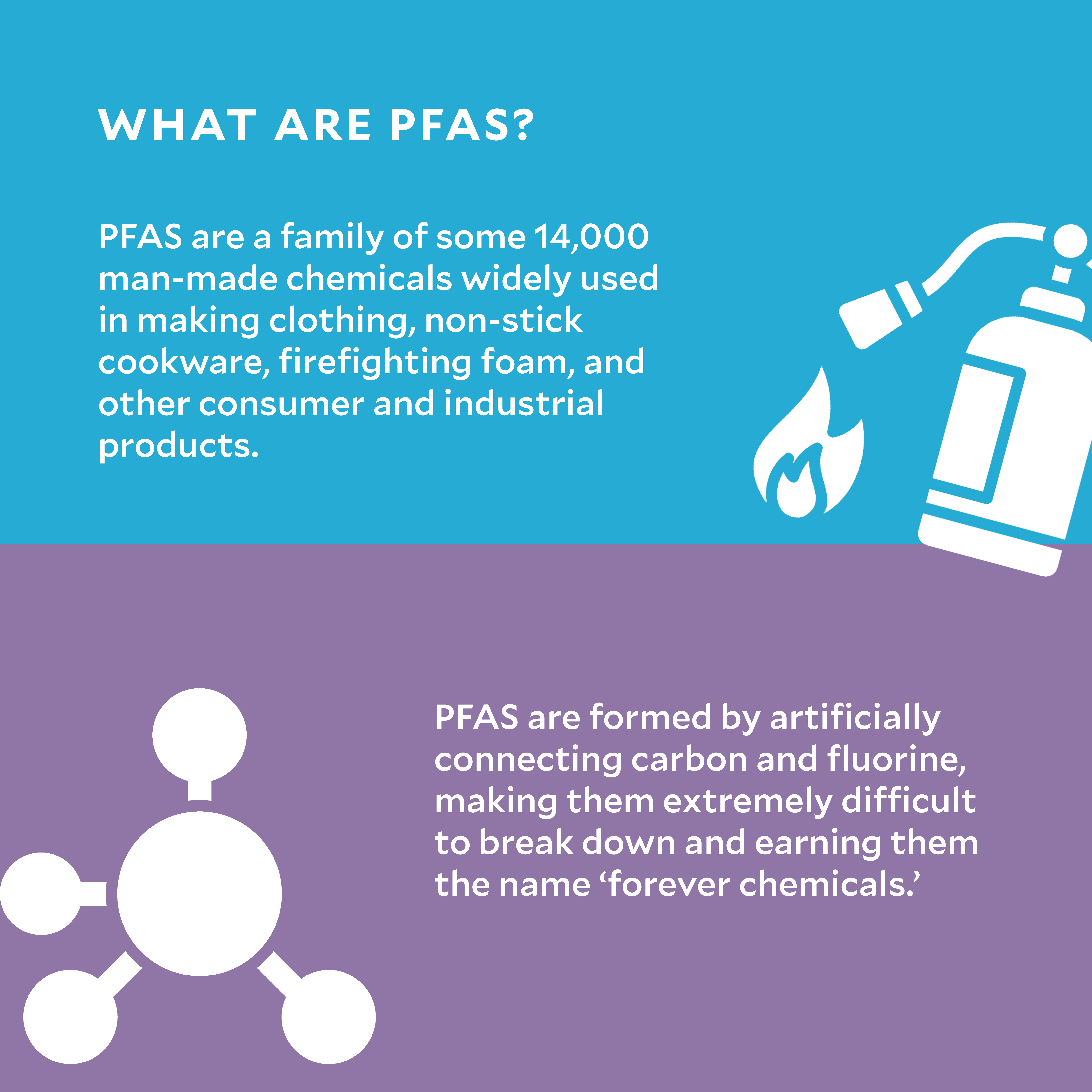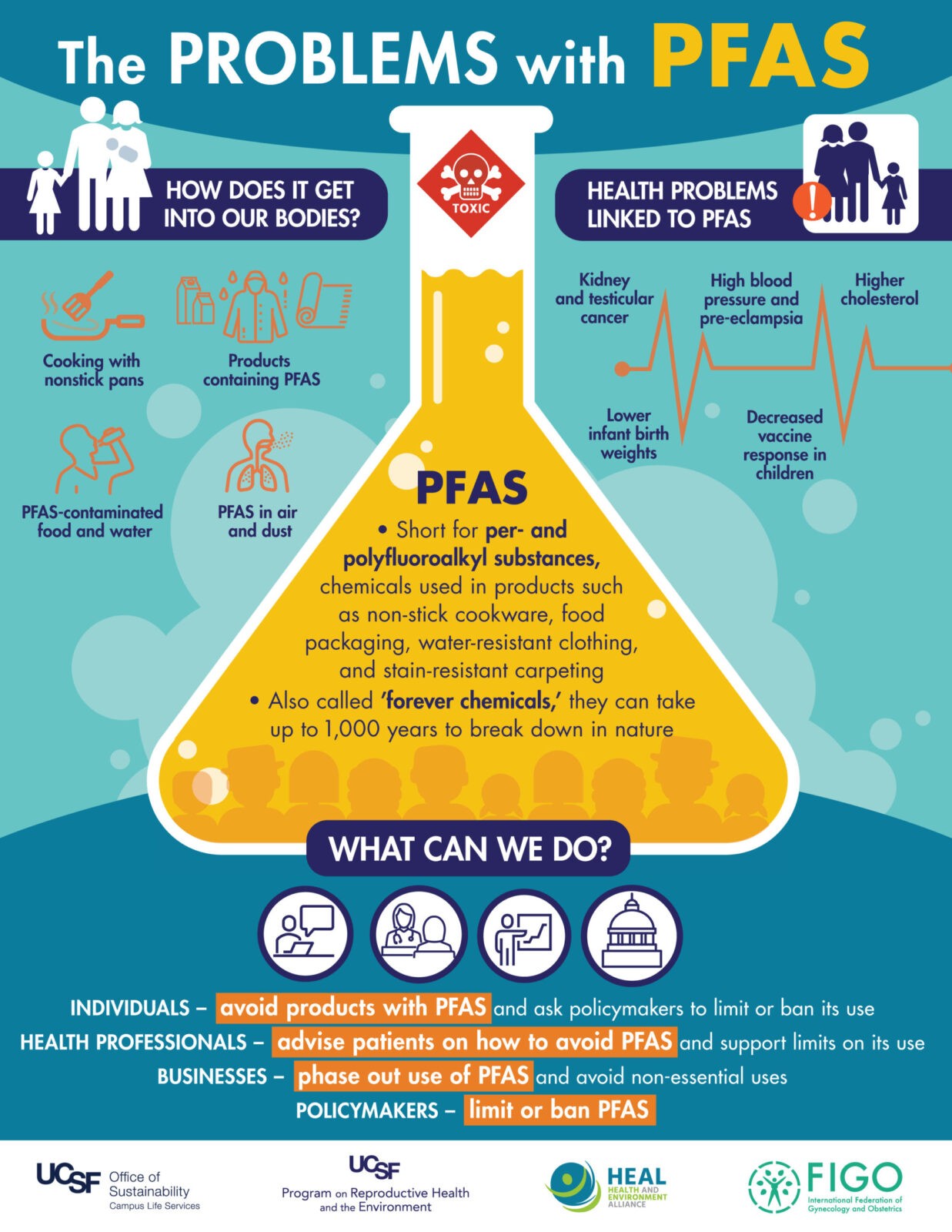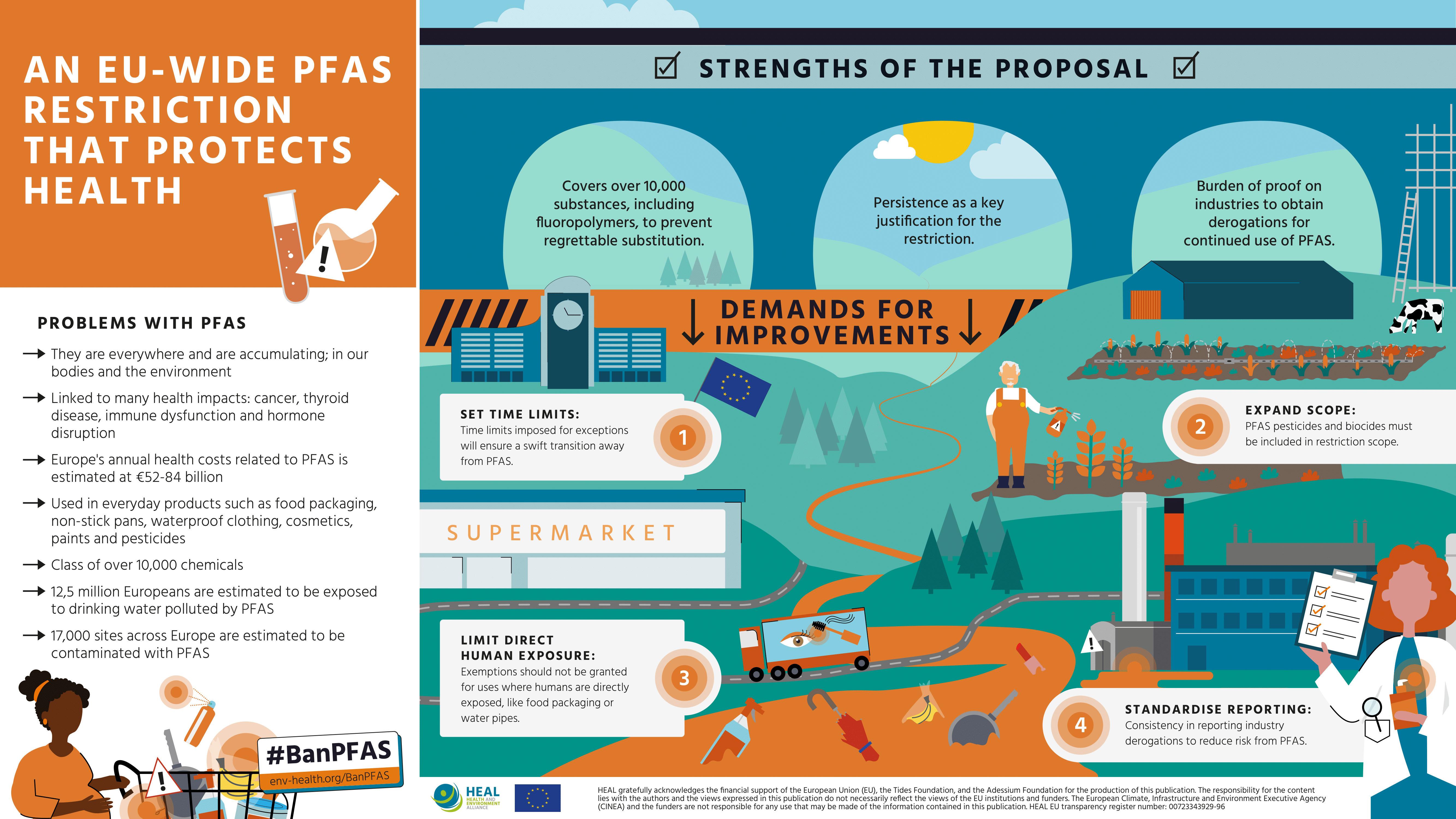Harshit Mittal
8 August 2025
Picture yourself munching on your favorite fast food burger. The wrapper prevents the grease from seeping through. Convenient, huh? Picture the wrapper, though, leaking into your fries, onto your hands, and ultimately, your blood stream. Welcome to the world of PFAS, the stealthy culprits in your pantry, your raincoat, even your immune system.
What are PFAS, anyway?

PFAS stands for Per- and Polyfluoroalkyl Substances, a collection of more than 14,000 manmade chemicals produced for the first time in the 1940s. Businesses adore them for the sole reason: they don’t degrade. Period. Molecules of these compounds are made up of carbon-fluorine bonds, one of the strongest in organic chemistry, so they will endure the heat, the water, the oil, and the degradation without flinching. That’s the reason they’re nicknamed the “forever chemicals.”
PFAS is contained in nonstick cookware, waterproof jackets, stain-proof furniture, fireproof foams, cosmetics, dental floss, sanitary napkins, and you’re not gonna believe it- food packaging. The paper wrapper your fries come in? PFAS. That compost-looking-lying take-out box? Yeah, still PFAS. They’re the grease-proofing agents, saviors in the war against soggy sandwiches and oily pizza boxes. But what makes these chemicals so functional is precisely what makes them terrifying.
Why PFAS Are So Hard to Ignore
PFAS are not biodegradable. Once they enter the environment, via manufacturing runoff, trash landfill leach water, or your discarded bag of microwave popcorn, they persist for centuries. They’re airborne, in the soil, in rivers, oceans and, incredibly, in the blood of 99% of humans, CDC research confirms. You’re reading correctly. Pretty near every human on the planet has measurable amounts of PFAS in their blood, even infants.
In fact, PFAS have been detected in
- Umbilical cords
2. Breast milk
3. Arctic ice
4. Water drinking sources all over the world
PFAS indestructibility and pervasiveness are not just an inconvenience, they’re a disaster. This isn’t plastic pollution that we can see floating in the ocean. The actual PFAS compounds themselves are microscopic, mobile, bioaccumulative which means they build up in organisms over time, stealthily making the climb up the food chain like invisible mercury.
Health Trade-Off: Convenience or Catastrophe
So what’s the actual cost to humans of having your burger wrapper stain-free? Growing scientific literature actually associates exposure to PFAS with increasing numbers of horrific medical afflictions:
- Testicular and kidney cancer
2. Liver damage
3. Thyroid disease
4. Poor immune response to vaccines
5. Hormonal disruption and reproductive damage
6. High cholesterol
7. Development delays for children
Science has shown even minuscule doses (parts per trillion) of PFAS to be hazardous. To put this in perspective, picture a single drop of PFAS contaminating an Olympic-sized swimming pool and still remaining a health hazard. This trade-off of non-stick convenience for a slow erosion of public health, is not just unsustainable. It’s immoral.

PFAS Issues with the Food Industry
Perhaps the most insidious use of PFAS is in the food packaging industry. The universe of the global food delivery app/late-night pizza has set the global standard around the humble package, with the need for grease-resistant packaging, for which the chemical of preference often is PFAS.
But here’s the turning point: PFAS migrates out of the packaging into the food, especially when it’s heated. That convenience box of take-away curry you warmed up yesterday? PFAS could’ve migrated right into your dinner. And since the body cannot metabolize these kinds of externally constructed compounds, they simply accumulate, a slice of pizza at a time.
What’s worse? The supposedly green compostable packaging that seems eco-friendly turns out to be typically treated with PFAS to keep it performing, but, when it “decomposes,” the chemicals don’t. They instead seep into the planet’s soil and waters, intensifying the stealth conquest of the globe.
The Environmental Fallout: An Invisible Tsunami
PFAS are indiscriminate. Having been released, they are global drifters. They move into air, dissolve into rain, flow down rivers, and find their way to contaminate remote environments. Researchers have found the presence of PFAS in polar bears, whales, and seabirds, the animals that have never even seen the wrapper of a burger.

There’s even farm frontier assault. Sludge from wastewater treatment plants that is contaminated with PFAS becomes fertilizer every now and then. That gets the PFAS into vegetables, grains, animals, and into the food fold by a different path. Now you can have a PFAS-contaminated tomato without consuming PFAS-contaminated packaging.
Water pollution is particularly a problem. In the U.S. alone, more than 200 million individuals consume PFAS-contaminated water. This is the situation throughout Asia, where huge factories carrying PFAS contamination discharge untreated wastewater into rivers directly. In China, Vietnam, and Indonesia, the production centers of the world, PFAS contamination is spreading and becoming more uncontrolled.
Why Are We Still Using Them?
The Short Answer: Profits and Performance.
PFAS are economical and highly effective. They provide durability that is rare among other chemicals, grease resistance, stain repellency, and waterproofing. Replacing non-PFAS technology for most companies would mean retraining the employees, reengineering the products, and incurring additional costs, reducing their profit margins. And because there are thousands of PFAS chemicals, each of them slightly different, prohibiting or regulating them individually is complicated with the possibility of various loopholes existing. The chemicals industry is prone to play “regrettable substitution”, substituting one banned or restricted PFAS with a slightly altered one not yet banned or regulated.
The outcome? A nasty whack-a-mole game.
So What Is to Be Done?
Thankfully, we’re not doomed to live in a PFAS apocalypse. Solutions are emerging, and momentum is growing worldwide.
1. Regulatory Action
Nations are acting. The EU is prohibiting more than 10,000 PFAS chemicals with the widest prohibition ever proposed. The U.S. EPA is proceeding to establish enforceable levels of PFAS in drinking water, down to 4 parts per trillion. Singapore started limiting PFAS in drinking water, though complete regulations persisted even until now. International coordination is required since the PFAS contamination is not geographically limited.

2. Industry Innovation
There is the emergence of new materials onto the market. Plant, wax-coated, and clay-based linings are being developed to replace or complement PFAS for foodstuffs packaging. Other manufacturers reformulate to be “PFAS-free” with cleaner labeling to meet the conscience of the consumer. Large chains, such as McDonald’s and Burger King, agreed to stop treating global packaging with PFAS by 2025. It’s late—but it’s a good place to start.

Conclusion: The War on Forever PFAS is an industrial advance bequest of environmental disaster. We traded long-term human and global well-being for short-term ease and flashy appearances. The question is not anymore if or whether PFAS is dangerous which they are. The question is “How much longer we’re comfortable looking away while it poisons our bodies and environment?”
Still Interested? Have a look at the following links for more details-






Leave a Reply
You must be logged in to post a comment.